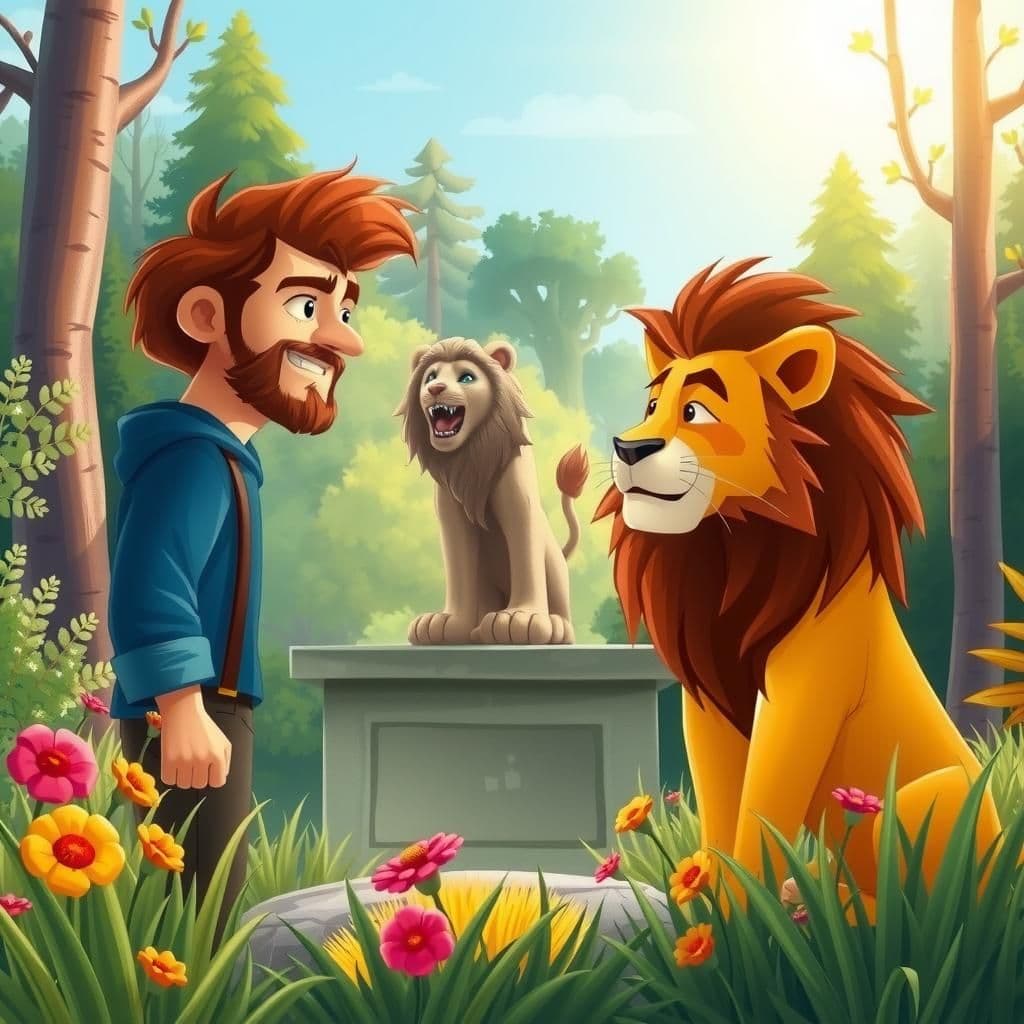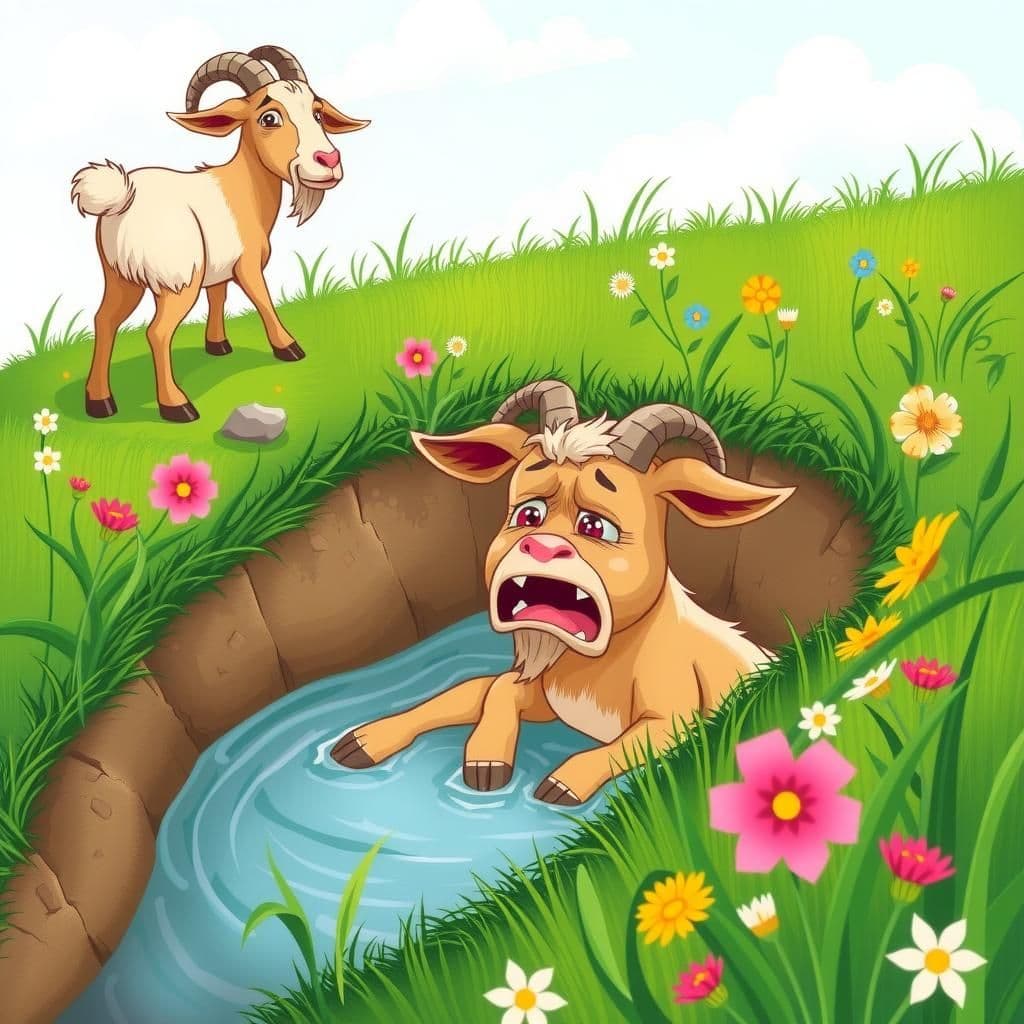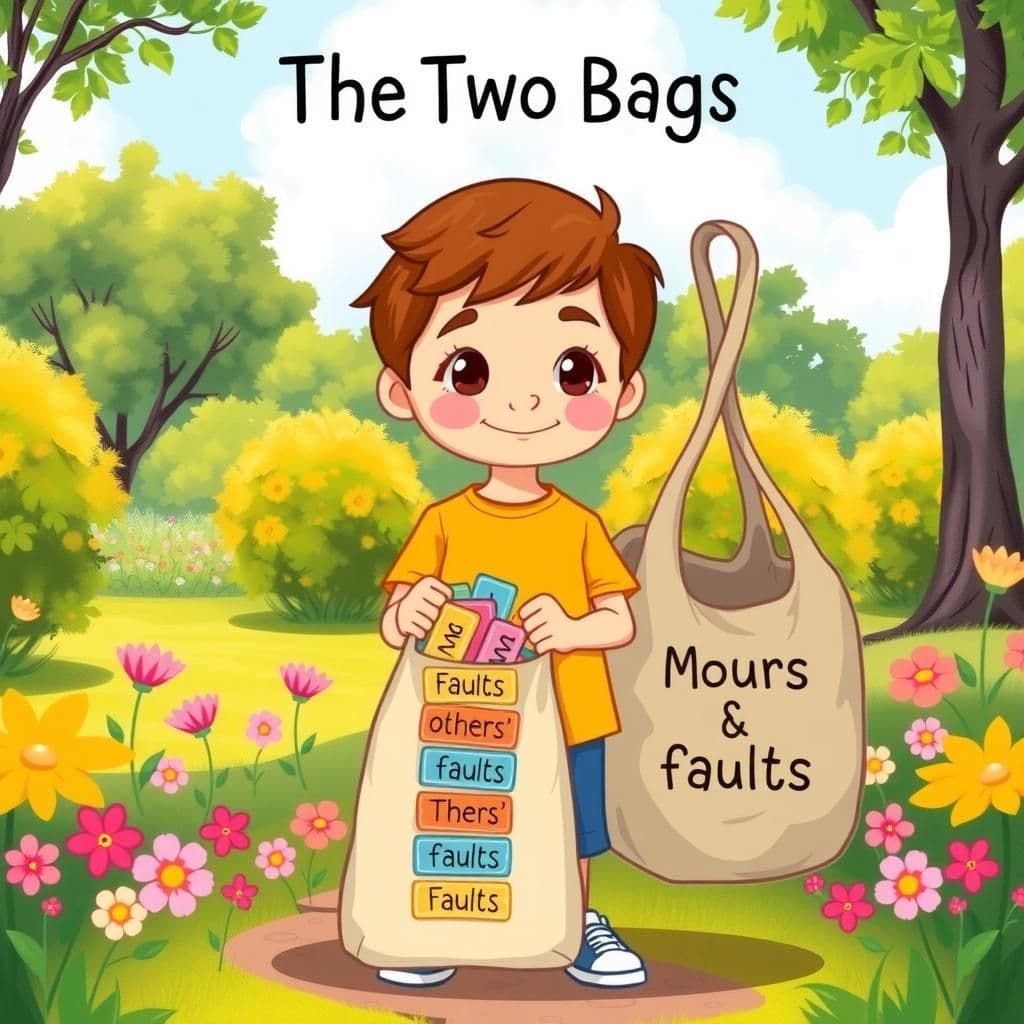The Man and the Lion

Story Summary
A man and a lion boast about their superiority while traveling together, leading to a dispute that reflects the themes found in famous moral stories. When they encounter a statue depicting a lion being strangled by a man, the man claims it showcases human strength, but the lion counters that it represents a biased perspective, suggesting that if lions could create statues, the roles would be reversed. This very short moral story illustrates that the lessons learned from stories can vary greatly depending on the storyteller's viewpoint.
Click to reveal the moral of the story
The moral of the story is that perspective shapes narratives, and the truth can be manipulated depending on who tells the story.
Historical Context
This fable, reminiscent of Aesop's works dating back to ancient Greece, serves as a commentary on perspective and the subjective nature of truth. The tale illustrates the idea that narratives are often influenced by the storyteller's biases, a theme echoed in various cultures through retellings that highlight the conflict between human and animal perspectives. Similar motifs appear in other fables and folklore, emphasizing the importance of understanding multiple viewpoints in the quest for wisdom.
Our Editors Opinion
This fable illustrates the importance of perspective and the subjective nature of truth, highlighting how narratives can be manipulated to serve particular interests. In modern life, this is evident in social media, where different viewpoints can shape public perception; for instance, a controversial event may be portrayed positively by one group while being condemned by another, emphasizing the need for critical thinking and open dialogue to understand the full picture.
You May Also Like

The Goat and the Ass
In "The Goat and the Ass," a story often shared as a childhood tale with moral lessons, a Goat envies the Ass for its better food and persuades it to pretend to be ill to escape hard labor. The Ass follows this misguided advice, injuring itself in a ditch, which ultimately leads to the Goat being killed to treat the Ass's wounds. This culturally significant moral story illustrates the dangers of envy and the consequences of poor decisions, making it a valuable lesson for kids and students alike.

The Man and His Two Wives
In this very short moral story, a middle-aged man with two wives—one young and one old—struggles to satisfy their conflicting desires regarding his appearance. The young wife removes his grey hairs to make him look younger, while the elder wife plucks out the black ones to avoid resembling his mother. Ultimately, his efforts to please both lead to his complete baldness, illustrating the lesson that trying to satisfy everyone can result in losing everything—a heartwarming tale with a clear moral.

The Two Bags
In the culturally significant moral story "The Two Bags," an ancient legend reveals that every person is born with two bags: one in front filled with the faults of others and a larger one behind containing their own faults. This poignant metaphor serves as a lesson learned from stories, illustrating how individuals are quick to perceive the shortcomings of others while often remaining blind to their own failings. As a compelling addition to short story collections with moral themes for adults, it emphasizes the importance of self-reflection and humility.
Other names for this story
Man vs Lion: A Tale of Pride, Strength and Statues, The Lion's Perspective: A Moral Fable, Who's the Real King? A Man and Lion Story, Strength and Pride: The Man and the Beast, The Statue of Strength: A Man and Lion Story, The Truth Behind the Statue: A Fable of Pride, Man and Lion: Tales of Superiority and Truth
Did You Know?
This fable highlights the theme of perspective in storytelling, illustrating how narratives can be shaped by those in power, often leading to a distorted view of reality. It reminds us that truth can vary greatly depending on who is telling the story.
Subscribe to Daily Stories
Get a new moral story in your inbox every day.